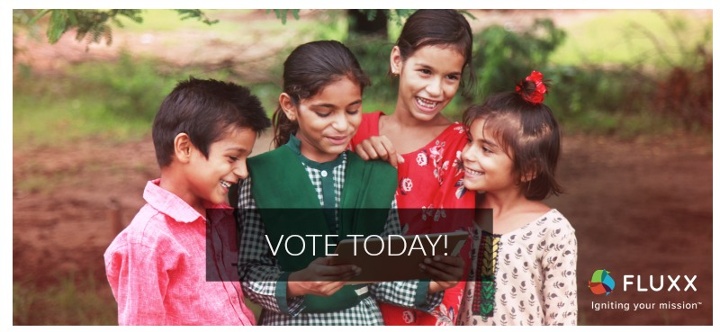 Americans gave nearly $400 billion to charitable organizations and individuals last year – to make education work better for our children, put food on the tables of our most vulnerable, and to create safer and healthier neighborhoods and communities for everyone, to name only a few of the causes supported by philanthropic giving in 2016.
Americans gave nearly $400 billion to charitable organizations and individuals last year – to make education work better for our children, put food on the tables of our most vulnerable, and to create safer and healthier neighborhoods and communities for everyone, to name only a few of the causes supported by philanthropic giving in 2016.
It’s an amazing amount of generosity and irrefutable evidence of our collective will to do good. But buried within the statistic lies a nagging question that I almost hesitate to bring up. It’s a question that lurks in the recess corners of my brain every year when the giving numbers are made public.
Is the money going to the right people and organizations in the most effective way possible?
That's the big question we want to dissect and debate at the 2018 South By Southwest conference in Austin. With your help, we’ll be joined by big thinkers in the field who are deeply passionate about this issue, including Amanda Keton, General Counsel of Tides and Managing Director of The Advocacy Fund, the 501 (c)(4) entity in the Tides family of organizations. Since 1976, Tides has worked to bridge the gap between foundations, donors, corporations, social investors, nonprofits, and government to help increase the impact of charitable giving. The event will be moderated by David Callahan, founder and editor of Inside Philanthropy, and author of the recent book, The Givers: Wealth, Power, and Philanthropy in a New Gilded Age.
Please vote on our panel to make sure this important discussion happens.
Together we want to dig down to the heart of the matter: How can institutional funders, high-net worth individuals, and even everyday donors move from a reactive style of giving to a more well-informed, data-driven approach so their dollars have the greatest impact?
There’s no doubt that each and every one of the people and organizations that benefitted from last year’s unprecedented giving is doing good work. The passion and sincerity with which they take on their missions is undeniable.
The challenge is that funding decisions made by individuals are many times based in the gut. People give because they care about a particular issue. Or a particular community. They give because they may have been touched personally by an illness or a natural disaster. And scientists tell us giving makes us feel good. All good reasons to give.
Institutional givers typically have a more sophisticated giving strategy. Subject matter experts are deployed. Dedicated and experienced professionals collect data from and assess the effectiveness of their prospective grantees. They rightly want to see that their investments are making a difference.
But are they seeing the whole picture? Do they really know what their impact is? Our experience tells us they don’t. Quantifiable metrics are essential, but numbers only tell part of the story.
What’s missing in this picture are the stories. The qualitative, contextual nuggets of information delivered in real time from the boots on the ground, from aid workers in Malawi, and doctors in Syria, to public health advocates in Detroit.
The amazing thing is, this data exists. Nonprofits by and large do an extraordinary job collecting relevant and actionable insights about their own programs. So all is good, right? Data is already being shared between funders and nonprofits to tell complete, data-driven stories that help ensure the greatest impact possible? Not exactly.
Funders and the nonprofits they fund share the same passion. They’re all in it for the same reasons. But sometimes it feels like they sit on opposite sides of the table. The relationship becomes transactional rather than collaborative. There’s a disconnect.
It’s an issue we think about a lot. And there are many valid and understandable reasons why the fissure exists. There’s an inherent power dynamic between funder and grantee. There are capacity issues on both sides of the equation. (Let’s get this thing funded so we can make an impact! We don’t have the time or resources to devote to more data.) And there is a tendency in all of us to succumb to inertia.
The challenges are many and there’s no quick fix, but isn’t it incumbent on the entire community to try? Our hunch is that nurturing strong, collaborative partnerships between funders and their grantees can be done much better. We believe that critical data and important stories can and should be shared in real time and without unnecessary friction. We believe in this hunch so much that we’ve staked our livelihoods on it. It’s our job to figure out how technology can help make this happen. But tech is only a small part of the equation.
It’s going to take a concerted effort of the entire community.
Now more than ever, philanthropy matters. There is a lot at stake in the world. And there is a tremendous amount of will and resources ready to mobilize. Let’s make sure it’s done in the most effective way possible.
SXSW values community input and involvement and only accepts panels that show great interest by the public. Please take a moment to vote on our panel so that we can have this important discussion in a collaborative space that is sure to yield new and innovative ideas.
Voting is only open until Friday, August 25, so don't delay. It's as easy as "review, vote, and comment" to make your voice heard! Click this link and cast your vote and let the community know why in the comments!
And if you're inclined, spread the word on Twitter! How can we use data to make philanthropy more powerful? Vote for @fluxxlabs @JasonRicci to discuss at SXSW https://goo.gl/sradWL #SXSW2018
